4.4 Product mappings
|
| < Day Day Up > |
|
4.4 Product mappings
The next step after choosing a Runtime pattern is to determine the actual products and platforms to be used. It is suggested that you make the final platform recommendation based on the following considerations:
-
Existing systems and platform investments
-
Customer and developer skills available
-
Customer preference
The platform selected should fit into the customer's environment and ensure quality of service, such as availability and performance, so that the solution can grow along with the e-business.
This section introduces the major products used in the application and provides an overview of the products as they apply to the Exposed Direct Connection Runtime patterns.
The product mappings shown use the standard pattern of path connectors (firewalls, demilitarized zone, and network infrastructure), although variations exists with fewer or more firewalls.
Our sample application, based on the Exposed Direct Connection application patterns, has been implemented using IBM WebSphere Application Server V5.0.2 on the Microsoft Windows 2000 platform.
Refer to 5.2, "Product descriptions" on page 101 for descriptions of the products used in these Product mappings.
| Note | Although we developed these product mappings from our sample scenarios on the Windows 2000 operating system, there are a number of other options because IBM WebSphere products run on a wide range of platforms (for example, Windows 2000, Linux, AIX, OS/400, z/OS, and others). |
4.4.1 Product mappings for Exposed Direct Connection: Message variation
This section presents Product mappings for the Message Connection variation of the Exposed Direct Connection pattern using:
-
Web services
-
Web Services Gateway
-
WebSphere Data Interchange
Web services
Figure 4-10 shows a Product mapping based on IBM WebSphere Application Server V5.0.2 and the Message Connection variation of the Exposed Direct Connection pattern that uses a one-way Web service invocation.
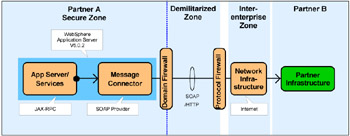
Figure 4-10: Exposed Direct Connection--Message Connection- Web services Product mapping
We use a message adapter connector in Partner A to model Web services application integration. This emphasizes the use of an adapter connector to convert the request into the common SOAP/HTTP protocol.
In this case, the source application uses the JAX-RPC API to send a one-way request via the WebSphere V5.0.2 SOAP provider. Partner B receives the request from the source via its unspecified infrastructure.
We used this combination of runtime nodes and products to implement the sample scenario described in Chapter 14, "Using inter-enterprise Web services" on page 299.
Web Services Gateway
Figure 4-11 shows another Product mapping based on IBM WebSphere Application Server V5.0.2 and the Message Connection variation of the Exposed Direct Connection application pattern that uses a one-way Web service invocation. This time we introduce the Web Services Gateway packaged with IBM WebSphere Application Server Network Deployment V5.0.2.
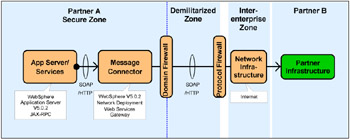
Figure 4-11: Exposed Direct Connection--Message Connection- Web Services Gateway Product mapping
This product mapping uses connection rules provided by the Web Services Gateway to allow greater control over the point-to-point connection between the source application and a business partner's target application. The gateway provides access control and a common access point for external Web services. It can also protect client applications from changes in the Web services they access.
We used this combination of runtime nodes and products to implement the sample scenario described in Chapter 14, "Using inter-enterprise Web services" on page 299.
WebSphere Data Interchange
Figure 4-12 shows a Product mapping based on WebSphere Data Interchange for Multiplatforms and the Message Connection variation of the Exposed Direct Connection application pattern. This product mapping uses IBM WebSphere MQ V5.3.1 as the transport mechanism between WebSphere Application Server, WebSphere Data Interchange, and iSoft Peer-to-Peer Agent.

Figure 4-12: Exposed Direct Connection--Message Connection- WebSphere Data Interchange Product mapping
WebSphere Data Interchange V3.2 with CSD1 is used to adapt each type of message or document to partner requirements. The product mapping uses iSoft Peer-to-Peer Agent V3.1.2 to adapt MQ messages and documents to the AS2 EDI protocol for secure and reliable transport of messages and documents with business partners via the Internet.
We discuss this combination of runtime nodes and products in Chapter 15, "Using WebSphere Data Interchange" on page 315. Further details can be found in the following Redpapers:
-
WebSphere Data Interchange Installation and Configuration, REDP3600
-
Implementation of iSoft and Integration with an EAI solution, REDP3625
4.4.2 Product mappings for Exposed Direct Connection: Call variation
This section presents Product mappings for the Call Connection variation of the Exposed Direct Connection pattern using:
-
Web services
-
Web Services Gateway
-
Web Services Gateway with protocol change
Web services
Figure 4-13 shows a Product mapping based on IBM WebSphere Application Server V5.0.2 and the Call Connection variation of the Exposed Direct Connection pattern that uses a request-response Web service invocation.
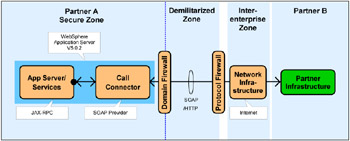
Figure 4-13: Exposed Direct Connection--Call Connection- Web services Product mapping
We use a call adapter connector in Partner A to model Web services application integration. This emphasizes the use of an adapter connector to convert the request and response into the common SOAP/HTTP protocol.
In this case, the source application uses the JAX-RPC API to initiate a request-response operation via the WebSphere V5.0.2 SOAP provider. Partner B receives the request from the source via its unspecified infrastructure.
We used this combination of runtime nodes and products to implement the sample scenario described in Chapter 14, "Using inter-enterprise Web services" on page 299. See also 9.5, "Integration with .NET-based Web services" on page 205 for discussion on integrating with .NET partner infrastructure.
Web Services Gateway
Figure 4-14 shows another Product mapping based on IBM WebSphere Application Server V5.0.2 and the Call Connection variation of the Exposed Direct Connection application pattern that uses a request-response Web service invocation. This time we introduce the Web Services Gateway packaged with IBM WebSphere Application Server Network Deployment V5.0.2.
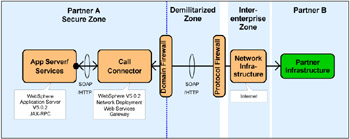
Figure 4-14: Exposed Direct Connection--Call Connection- Web Services Gateway Product mapping 1
This product mapping uses connection rules provided by the Web Services Gateway to allow greater control over the point-to-point connection between the source application and a business partner's target application. The gateway provides access control and a common access point for external Web services. It can also protect client applications from changes in the Web services they access.
We used this combination of runtime nodes and products to implement the sample scenario described in Chapter 14, "Using inter-enterprise Web services" on page 299.
Web Services Gateway with protocol change
Figure 4-15 shows a Product mapping based on IBM WebSphere Application Server V5.0.2 and the Call Connection variation of the Exposed Direct Connection application pattern that uses a request-response Web service invocation. In this product mapping the Web Services Gateway provides a protocol change between Partner B and the target application in Partner A.
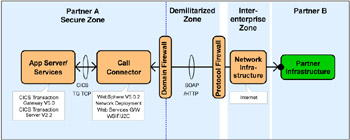
Figure 4-15: Exposed Direct Connection--Call Connection- Web Services Gateway Product mapping 2
In addition to the connection rules capabilities described in "Web Services Gateway" on page 93, the gateway provides adapter connector capabilities. This product mapping allows a Web service client application in Partner B to invoke a CICS target application in Partner A using SOAP/HTTP. The gateway converts the SOAP/HTTP call to the CICS Transaction Gateway TCP protocol using the Web Services Invocation Framework and the CICS ECI J2EE Connector.
In addition to J2EE Connectors, the Web Services Gateway can be used to connect Web service client applications with target applications that are accessed via JMS or RMI/IIOP.
This combination of runtime nodes and products is based on the sample scenarios described in Chapter 14, "Using inter-enterprise Web services" on page 299 and Chapter 11, "Using the Web Services Gateway with J2EE Connectors" on page 237.
|
| < Day Day Up > |
|
EAN: N/A
Pages: 139